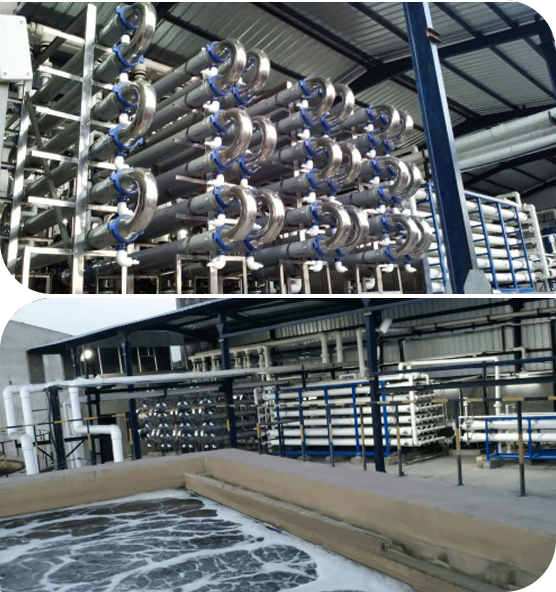
Waterman Engineers Australia has become the leading companies of Zero Liquid Discharge technique. A ZLD technique is usually a treatment process that is utilized to remove all the liquid squander from the program. The aim of ZLD water treatment is to lower wastewater economically and deliver potable drinking water which is match for normal use. Zero discharge procedure is a sophisticated remedy method that comprises ultrafiltration, reverse osmosis, evaporation and fractional electro deionization. And we've been a properly-identified provider of ZLD programs.
In many Industries, for instance electrical power, oil & fuel, chemical substances, mining and Other people, a great deal of wastewater is generated that needs to be managed. Conventionally, this discharge of wastewater is done through a plant outfall to a floor h2o entire body like an evaporation pond, or occasionally deep effectively injected. These tactics bring about lots of environmental considerations by the general public in several regions of the earth, as h2o is actually a scarce supply and its administration ought to be monitored. These worries have resulted in the establishment of ZLD processes by a lot of industries to reduce their environmental footprint and improve sustainability. And, Waterman Engineers Australia are ideal ZLD suppliers you can find for this system.
Qualities OF ZERO LIQUID DISCHARGE Process
The Attributes of the Zero Liquid Discharge system may vary depending on the distinct design and engineering utilised. On the other hand, some popular Attributes of ZLD units include:
H2o Conservation: Amongst the first targets of ZLD devices will be to conserve water by reducing the discharge of liquid squander to the surroundings.
Large Water Purity: ZLD units are meant to develop substantial-top quality water that may be absolutely free from impurities and contaminants, which makes them suitable for use in lots of industrial processes.
Flexibility: ZLD techniques tend to be built to accommodate a wide variety of enter liquid streams, which makes them multipurpose and suited to use in different industries.
Highly developed Wastewater Remedy: Zero liquid discharge systems use State-of-the-art wastewater therapy techniques to eliminate impurities and contaminants within the effluent, generating superior-top quality drinking water.
Squander Reduction: ZLD methods enable decrease waste by lessening the volume of liquid waste that needs to be disposed of and by manufacturing a concentrated, strong waste content which might be safely disposed of.
Vitality Effectiveness: ZLD units may be Vitality-intensive due to high Power needs of evaporation together with other wastewater procedure procedures. However, advances in technologies are producing Zero liquid discharge programs far more Strength-successful and value-successful.
Waterman Engineers Australia manufactures Zero Liquid Discharge (ZLD) techniques created to get rid of all liquid waste, aiming to produce potable h2o and limit environmental impression. Their ZLD programs normally contain ultrafiltration, reverse osmosis, evaporation, and fractional electro deionization. Important systems applied are Falling Movie Brine Concentrators, Forced Circulation Crystallizer, and others, which has a two-action technique of pre-focus and evaporation/crystallization to Get well and reuse water. These units are adaptable to diverse industries, emphasizing water conservation, superior drinking water purity, squander reduction, and Vitality performance. Complex specifications are diversified and customizable, thinking about factors like drinking water resource, movement level, and feed water high-quality.
The need for Zero Liquid Discharge (ZLD) devices arises from the necessity to deal with environmental issues relevant to water scarcity and pollution. In industries like electric power, oil & fuel, and mining, large quantities of wastewater are created. Historically, this wastewater is discharged into bodies of drinking water, resulting in air pollution and depleting thoroughly clean h2o means. ZLD methods intention to attenuate these impacts by dealing with and recycling wastewater in just the industrial system, thus conserving h2o, minimizing waste, and endorsing sustainability.
When thinking about the complex technical specs of a Zero Liquid Discharge (ZLD) program, critical factors to concentrate on incorporate the h2o resource it can handle, the procedure's circulation Zld System Manufacturer Zero Liquid Discharge System charge, the quality of feed water, the levels of procedure included, the Restoration rate of h2o, approaches for concentrate disposal, resources of construction, running situations, and technique automation and Management. These factors ensure the system's performance, durability, and effectiveness in managing and recycling industrial wastewater.
Zero Liquid Discharge (ZLD) plants offer you Added benefits which include drinking water conservation, squander reduction, and pollution avoidance, contributing to environmental sustainability. They're relevant in industries like electrical power technology, oil and fuel, chemical compounds, and mining, where by they assist in handling industrial wastewater successfully, minimizing the ecological footprint, and complying with demanding environmental laws. These programs are vital in locations dealing with water scarcity and for industries aiming to further improve their sustainability and operational efficiency.
FAQs for just a Zero Liquid Discharge (ZLD) procedure usually handle its operational principles, Expense-usefulness, routine maintenance demands, environmental impact, applicability across several industries, and regulatory compliance. These concerns support buyers realize the process's benefits, specialized needs, and suitability for his or her precise wastewater administration needs.
1. Zero Liquid Discharge (ZLD) is actually a wastewater cure system made to eradicate all liquid waste.
2. The program's elements are influenced by the particular industrial system, wastewater composition, and regulatory necessities.
3. Effluent therapy plants eliminate pollutants from textile effluents to stop environmental contamination.
four. Advantages involve h2o conservation, air pollution reduction, and regulatory compliance.
5. The objective is to minimize environmental impact by recycling h2o and decreasing waste.
6-nine. Effluent remedy plants are levels in wastewater procedure: Key (Bodily separation), secondary (biological remedy), and tertiary (Superior therapy).
ten. Device operations include filtration, sedimentation, Organic remedy, and disinfection.
11. Restricting parameters are variables that have an effect on the therapy's performance, like pH and contaminant concentration.
twelve. Design considerations include move amount, effluent composition, and sought after high quality of addressed drinking water.